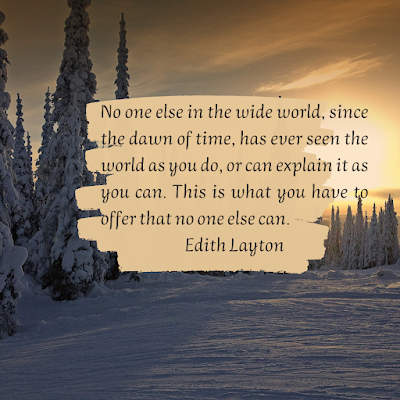Deborah J. Ross's Blog, page 21
February 27, 2023
How to Help Girls (and Everyone!) Cope with Pandemic Depression
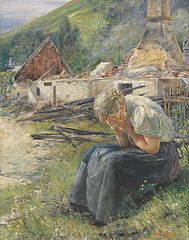 This article first appeared in The Conversation and is republished here in a slightly condensed form under a Creative Commons license. It's so important, it deserves to be widely read.
This article first appeared in The Conversation and is republished here in a slightly condensed form under a Creative Commons license. It's so important, it deserves to be widely read.Previous CDC research has shown that the COVID-19 pandemic disproportionately affected girls. And in a 2021 study that our team conducted with 240 teens, 70% of girls said that they “very much” missed seeing people during the pandemic, compared with only 28% of boys reporting that sentiment.
A second factor is social media, which can be a wonderful source of support but also, at times, a crushing blow to the self-esteem and psychological well-being of girls.
Finally, we think that all young people are struggling with issues like climate change and social upheaval.
Here are six strategies that research shows can work.
Social and emotional connectivity between humans is likely one of the most potent weapons we have against significant stress and sadness. Studies have found strong links between a lack of parental and peer support and depression during adolescence. Support from friends can also help mitigate the link between extreme adolescent anxiety and suicidal thoughts. In one study of teens, social support was linked to greater resilience – such as being better able to withstand certain types of social cruelty like bullying.
2. Supporting one another instead of competingResearch has found that social media encourages competition between girls, particularly around their physical appearance. Teaching girls at young ages to be cheerleaders for one another – and modeling that behavior as grownups – can help ease the sense of competition that today’s teens are facing.
3. Showcasing achievementsThinking about your own appearance is natural and understandable. But an overemphasis on what you look like is clearly not healthy, and it is strongly associated with depression and anxiety, especially in women.
Adults can play a key role in encouraging girls to value other qualities, such as their artistic abilities or intelligence. Childhood can be a canvas for children to discover where their talents lie, which can be a source of great satisfaction in life.
One way that adults can help is simply by acknowledging and celebrating those qualities. For instance, at the Massachusetts Aggression Reduction Center, an organization we direct and manage that is focused on prevention of bullying and cyberbullying, staff members post female achievements – be they intellectual, artistic, scientific, athletic or literary – on social media channels every Friday, using the hashtag #FridaysForFemales.
4. Empowering womenGirls look to grown women for examples of how they can behave and what they can do. You may not be the chief executive officer of a huge corporation, but maybe you are a wonderful teacher, or maybe you run a small business that provides an important product or service. Modeling pro-women attitudes means valuing all of the roles that people play in a society.
In addition, teaching the history behind women’s movements and other important steps toward equality, such as the women’s right to vote, is key to empowering girls to value themselves and their roles. Women played central roles in war efforts during World War II. Women have led social movements and fought for people’s rights. And women have been renowned scientists, writers, artists and experts in virtually every other profession you can name.
5. An honest look at social mediaSocial media represents a unique form of human interaction that has taken on an outsize role in the lives of teens. This is magnified for teenage girls, for whom every social media interaction may feel consequential and potentially cataclysmic.Interacting in a fun and positive way with peers on social media platforms can be a positive and affirming experience. On the other hand, seeing the things that others post, and comparing it with your own stuff, can make people of any age feel anxious about how they’re appearing, and whether they’re being socially included or excluded. This anxiety applies to both boys and girls, but the potential for emotional distress seems to be higher for girls.
Awareness of how social media has the capacity to influence your feelings and mental health seems to help people keep some distance from their interactions on social media. Adults can help girls by discussing with them how social media influences their feelings, their self-perception and even their body image.
6. Teaching kids to recognize their feelingsLearning to recognize and label feelings doesn’t come automatically for many people. The good news, though, is that kids can learn ways to help themselves when they’re experiencing anxiety or depression. Kids can learn to appreciate how hugging their dog, playing a board game, or talking with their parent(s) can help reduce anxiety, once they understand the feelings.
We think it’s worth noting that everything discussed here can also be helpful for boys, who are by no means immune to mental health problems. Encouraging achievement recognition, understanding how moods can be influenced by social media, and increasing support for both boys and girls is a positive step as we move toward a post-pandemic world.
February 24, 2023
Short Book Reviews: World-Hopping While You Sleep, Part 2
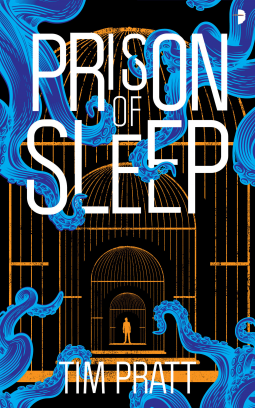 Prison of Sleep, by Tim Pratt (Angry Robot)
Prison of Sleep, by Tim Pratt (Angry Robot)I’m an unabashed fan of Tim Pratt’s work, and Doors of Sleep, the first volume of the “Zax Delatree duology,” captured me immediately. The premise is an engraved invitation to heart-breaking adventure: whenever sweet, compassionate mediator Zax Delatree falls asleep, he wakes up in a different reality. Not another planet or even another galaxy, a completely different dimension. He can take with him only what he carries and can stay only as long as he remains awake. Fortunately, the worlds he travels to are habitable (no gas giant atmospheres or torrents of liquid diamonds), so he can breathe the air and digest whatever food he can find. At first, he could not even understand the language of his destination culture and had no way of obtaining the necessities of life (food, clothing, shelter) except by theft. Worst of all was the soul-crushing loneliness of leaving behind every friend he makes. In Doors of Sleep, he encounters a psychotic scientist who infects him with a translation virus, meets and falls in love with artist, Ana, and found a few companions (including a sentient crystal disguised as a ring) capable of traveling with him.
Now comes the second part of the story: the revelation of What It’s All About: the secret behind dimension-hopping and the dastardly plot behind it. Along the way, he reunites with Ana (and gets separated again, several times) and friends, new and old. Having more lasting relationships helps Zax survive emotionally as well as physically and fuels his determination to leave each world better than he found it.
As always, Pratt’s narrative is endlessly inventive with great characters, smooth prose, and nifty plot twists. Best of all is the sense of humanity and compassion flowing through these two linked books.
February 20, 2023
5 things you might find in my stories
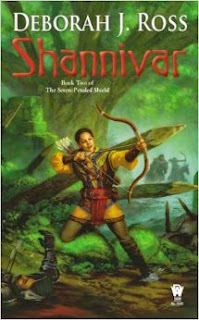
5 things you might find in my stories
1. Nonviolent resolutions to conflict 2. No person is entirely good or evil 3. Mothers are heroes and have adventures 4. Libraries are worth saving 5. Love heals, although often it is not enough
February 17, 2023
Short Book Reviews: Our Favorite African-Scottish Teen Ghost Talker Returns!
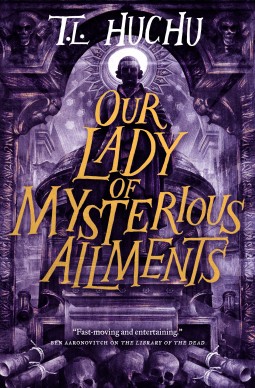 Our Lady of Mysterious Ailments, by T. L. Huchu (Tor)
Our Lady of Mysterious Ailments, by T. L. Huchu (Tor) I absolutely fell in love with Ropa Moyo, the African-Scottish teenager who lives with her knitting-maven grandmother, younger sister, and fox companion in a broken-down trailer in post-apocalyptic Edinburgh. Hyper-responsible Ropa has been scratching out a living for her family as a ghost-talker by carrying messages from the deceased to their surviving families (who pay a fee). In the first adventure, she stumbles upon an underground occult Library of the Dead and various secret magical academies and societies. With the exception of her loyal, long-time magical student friends and a charismatic higher-up Sir Callandar, who is also her mentor, the magical intellectuals look down on her.
The book opens with, “So, I’m skint again. ‘Nothing new there, Ropa,’ I hear you say. Well, up yours. This time though, a lass is in luck – Sir Callander, Scotland’s premier magical bigwig, has hooked me up with an interview for an apprenticeship. Free food and a proper wage — all for a wee bit of filing. Yay.”
What Ropa hopes would be a paid apprenticeship gets downgraded to a crummy unpaid internship. So when her friend, Priya, who works at Our Lady of Mysterious Maladies magical hospital, offers her a paid gig investigating an enigmatic, possibly deadly illness striking students. Her sleuthing leads her to a lost fortune, a demented vengeful ghost, and a secret buried deep in Scotland’s past.
The action, world-building, and characters move the story right along, but by far the most enchanting part of the book is Ropa’s wonderful voice, a combination of teenage sass, way too many smarts, a huge dose of compassion, and neoScottish slang. I’ll hang out with her any day!
February 14, 2023
It's Cover Reveal Time!
Jewels of Darkover, the 20th Darkover anthology, features marvelous stories by Diana L. Paxson, Shariann Lewitt, Marella Sands, Barb Caffrey, and many more! It's scheduled for May 2, 2023. Stay tuned for more previews, Table of Contents, and pre-order link!
I love this gorgeous cover, designed by Dave Smeds.
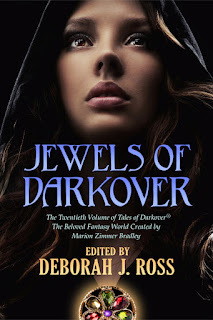
February 13, 2023
Author Interview: Joyce Reynolds-Ward
Joyce Reynolds-Ward and I met the pre-pandemic days when I regularly traveled to conventions in the Pacific Northwest. She’s warm, funny, endlessly curious, and a fantastic writer. And a knowledgeable and enthusiastic horse person. So when I heard she’d just put out a new book, I couldn’t wait to find out about it.
Deborah J. Ross: Tell us a little about yourself. How did you come to be a writer?
Joyce Reynolds-Ward: I've been making up stories to entertain myself since I was little. At first, they were about books I'd read or TV shows I watched. Then I started writing stories off and on, starting with my junior high literary magazine continuing through the present day. I've gotten somewhat serious about writing since the late '00s, however, and have been writing regularly since 2008 or so.
DJR: What inspired your book?
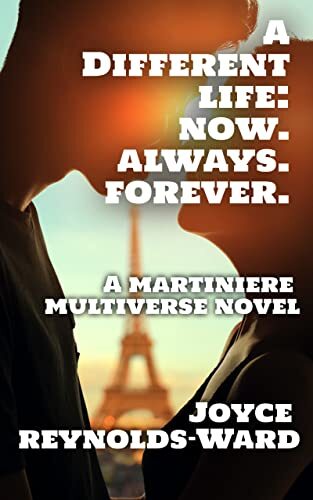
JRW: My most recently published book, A Different Life: Now. Always. Forever. was an attempt to write something light. Um. Well. Maybe. It's set in what I call the Martiniere Multiverse, a spinoff from my main series, The Martiniere Legacy and the People of the Martiniere Legacy.
When writing A Different Life: What If?, I half-toyed with the idea of writing about my main characters, Ruby and Gabe, from the perspective of Ruby's best friend in college, Linda Coates, who Ruby hires to be her executive assistant. The more I thought about it, the more I liked the idea, and I figured that it would make a nice, light little story, which was what I needed to think about after several years of Covid and my worries about the 2022 election.
Things kinda happened from there. The book took a more political tone after the reversal of Roe v. Wade, with Linda's brother-in-law becoming a rising reactionary political leader who has nefarious designs involving Linda. But there are still light moments, and we have a bit of biobot action where Ruby and Linda release the latest version of Ruby's bots that are intended to counter climate change by helping plants absorb and retain moisture better. Plus--Linda's reaction to living in an Art Nouveau palace in Paris, France. That was fun to visualize.
DJR: What authors have most influenced your writing? What about them do you find inspiring?
JRW: My influences come from several very odd and unusual places, especially for a writer in the speculative fiction genre. One of my earliest influences was Mary O'Hara, of My Friend Flicka fame. If you have only read the first book, especially in an abridged edition considered suitable for children, you miss a LOT of the deeper undercurrents of O'Hara's writing. The other two books in the trilogy, Thunderhead and Green Grass of Wyoming, delve into spirituality (O'Hara had become involved with early versions of Eastern mysticism) and conflicted, difficult marital relationships. Writing this, I suddenly realize that my character Gabriel Martiniere owes a little bit to O'Hara's Rob McLaughlin. Not a lot--but there's a little bit of Rob in Gabe.
One thing to consider, though, about O'Hara, is that she was one of the original script doctors in Hollywood during the silent film era. While she only cites a few instances where she got called in to work on scripts gone wrong, it's enough to make me wish that she had written a memoir about that Hollywood experience. Nonetheless, her life story (as related in Flicka's Friend) is quite fascinating.
John Steinbeck is another literary influence that I frequently cite from my early days of writing. One of my high school English teachers used his Travels with Charley as a textbook for her advanced writing class. From Charley, I moved on to his Journal of a Novel, drafted while he was writing East of Eden. Then I went on to read all of his books. Steinbeck, along with O'Hara, taught me a lot about the use of settings in my work that I think really still shows up.
Otherwise, there are many writers who have influenced my work and made me think more about the process of writing and what I was doing while writing. Obviously, I read widely and well beyond the genre. Recent influences include C.J. Cherryh, Beverly Jenkins, Aliette de Bodard, Kate Elliott (especially her so-underestimated Jaran books), Craig Johnson, N. K. Jemisin, Mary Robinette Kowal, and many, many more. I am always eager to discover a new writer and new works. My ebook library card gets a LOT of use these days.
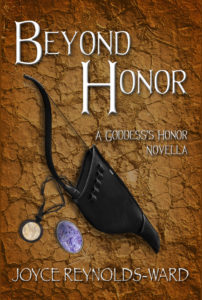
DJR: Why do you write what you do, and how does your work differ from
others in your genre?
JRW:Originally, I started writing what I do because I wasn't finding the books I wanted to read. I wanted to read about more strong women, but I also wanted to read fantasy in settings that weren't quasi-medieval Europe, as well as science fiction that wasn't set in Southern California or New York. I wanted to see more work that included the things I was interested in, including realistic horses, the inland West as a setting, examination of political power that didn't make me want to throw the book across the room, and other things.
I write politics from my training in political science and the nearly two decades I spent as a political organizer. Some writers in genre have that knowledge and understanding, but many don't. While my understanding is more on the state and local level, it's enough to extrapolate for larger settings. Additionally, because I spent many years as a corporate wife at the middle management level in sales, I know somewhat more about some of the stuff that goes on in that realm than most people. The ins and outs of management fads, the degree to which certain things get done, the internal politics...all of that. I focus on multigenerational privately-held corporate entities rather than larger publicly-held companies because that's easier to control in a story.
The inland West as a setting as opposed to the Southwest is also a way that I'm different from many writers who might set stories in the North American West. I have always been drawn to the juxtaposition of mountains and prairies, such as you find around the foothills of the Rockies, both the east side and the west side. The western prairies get much less awareness than the eastern prairies, because they're smaller. But the land of the Palouse, both in Oregon and Washington, is just chock-full of story potential. While I grew up in Western Oregon and have some work set in Willamette Valley-esque settings, including the Cascades, the Plateau country of eastern Oregon holds a fascination for me. The Blues and the Wallowas are considered to be the westernmost extensions of the Rockies in the Northwest.
DJR: How does your writing process work?
JRW:My writing process evolves on a regular basis. These days, I use both Word and Scrivener to create my first drafts. All of my worldbuilding notes go into files under the Research tab in Scrivener. That includes outlines, timelines, names, relationships, character arcs, etc., etc.--you name it, I've probably got it under the Research tab. It's a lot easier to organize my work that way.
Scrivener is always open when I'm drafting in Word. I write chapters in Word. Once the chapter is finished, I copy and paste it into Scrivener. For one thing, it's a lot easier to draft a chapter at a time in its own document. But if I need to change something, or look something up from earlier in the book for continuity purposes, it's a lot easier to do it in Scrivener. I can remember chapters a lot easier than page numbers. Additionally, it is a lot easier for me to visualize where I am in the book by looking at the Scrivener chapter list.
One big process change for me recently has been serialized writing. I started doing serials on Kindle
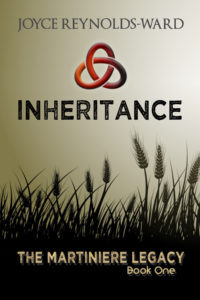
Vella. Then I added Substack serialization. This allows me to play in my Martiniere world--which is somewhat fanfiction of my own work--while drafting other work. Furthermore, even when I'm serializing non-Martiniere work, I can draft ahead until I have several weeks of episodes ready to go, then turn my attention elsewhere. It's been an interesting change in my workflow, especially since most of my Kindle Vella work consists of half-drafted stories that I never have been able to develop because they were challenging in one form or another. The serialization process really helps with that. As a result of serialization, I've turned out one book and several novellas from my old files, and my current work-in-progress is one of those older ideas that is really starting to blossom because of the serialization process.
Essentially, with a serial, I write until I hit a place where the brain hits the wall with that story. If it were the only thing I was working on, that would be a problem. Instead, I upload the rough drafts, then turn my attention to short stories, another serial, or a non-serial book project. That lures the brain into cooking up new things for that otherwise-difficult story.
I've been pleased with the results so far. Will I continue doing this serialization setup? I don't know. I plan to shift to drafting a three-volume fantasy series once I complete the current Kindle Vella serial. Will I serialize it? I don't know yet. I haven't decided. I could end up with multiple serial stories--or not.
DJR: What have you written recently? What lies ahead?
JRW:I've talked about it above, but it doesn't hurt to mention it again. My most recent publication is A Different Life: Now. Always. Forever. But I am also working on a Martiniere Multiverse serial, The Cost of Power, which is running once a week on my Martiniere Stories Substack. Because it's a multiverse version of my original Martiniere Legacy series, it's a lower priority for other work. However, I'm also using my established characters to experiment and play with a couple of different things. This time, I'm examining the notions of mind control technology that I introduced in the main Martiniere Legacy books, along with the notion of digital thought clones that can move from one universe to another, and have influences across the multiverse.
I'm developing a Weird West multiverse serial, as well, Into the Vortex. It, along with a novella that I intend to republish and list widely, Bearing Witness, examines how well-intentioned time travelers from the future totally muck things up, triggering a multiversal war stemming from around the time of the Civil War in our universe, that involves sorcerers and magic users.
The current Kindle Vella project is Federation Cowboy, a far-future space opera where rodeo is elevated to duels between sentients and non-sentients of varied species, and the ultimate duel is between two sentients. So what happens when two duelists, one human, the other horse, are both elected as Planetary Representatives to the Federation Congress, and face the threat from Plasmoid entities who have nefarious plans to take over the Galaxy using psychoactive substances. This becomes a greater threat because ancient Plasmoid scientists apparently were heavily involved in the development of a process called Conversion, by which assorted species become sentient, what we would call "higher" intelligences. But--is that all? And can sentience be rolled back--even in humans? Federation Cowboy starts digging into some of those notions, and it's become so much more than what I originally envisioned.
I am also planning to republish a cozy apocalypse standalone book, Beating the Apocalypse, which is currently only available through Amazon. I was planning to publish it wide, but then I developed cataracts. If further interest is shown in it, then I'll probably write more in that world.
And then there's the fantasy series that I wrote nine other books to avoid digging into. The Goddess's Vision series is an extension of my Goddess's Honor books. It delves into "what happens after you overthrow the Evil Emperor?" How do the pieces get put back together--or do they? And there's a lingering threat that wasn't completely eliminated in the Goddess's Honor books.
So yes, I have plenty to work on yet!
DJR: What advice would you give an aspiring writer?
JRW: Simply this--read widely. Read new work and old, in balance. Read for fun and for edification.
Along with reading--write. Write snippets. Observations. Keep a journal. Even if you aren't actively drafting a story, keep that writing muscle going by working on something, even if it's only an exercise to improve some aspect of your writing.
Keep learning and growing.
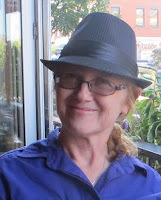 Joyce Reynolds-Ward has been called “the best writer I’ve never heard” by one reviewer. Her work includes themes of high-stakes family and political conflict, digital sentience, personal agency and control, realistic strong women, and (whenever possible) horses, frequently in Pacific Northwest settings.
Joyce Reynolds-Ward has been called “the best writer I’ve never heard” by one reviewer. Her work includes themes of high-stakes family and political conflict, digital sentience, personal agency and control, realistic strong women, and (whenever possible) horses, frequently in Pacific Northwest settings. She is the author of The Netwalk Sequence series, the Goddess’s Honor series, The Martiniere Legacy series, The People of the Martiniere Legacyseries, and The Martiniere Multiverse series, as well as standalones, Beating the Apocalypse, Klone’s Stronghold, and Alien Savvy.
Samples of her Martiniere short stories/novel in progress and her nonfiction can be found on Substack at either Speculations from the Wide Open Spaces (writing), Speculations on Politics and Political History (politics), or Martiniere Stories (fiction).
Joyce is a Self-Published Fantasy Blog Off Semifinalist, a Writers of the Future SemiFinalist, and an Anthology Builder Finalist. She is the Secretary of the Northwest Independent Writers Association, a member of the Science Fiction and Fantasy Writers Association, and a member of Soroptimists International.
Find out more about Joyce at her website, http://www.joycereynoldsward.com. Joyce is @JoyceReynoldsW1 on Twitter, jreynoldsward on Tumblr, joycereynoldsward on
Counter.Social, and jreynoldsward on Dreamwidth.
Here’s where to find her new book!
Amazon: https://www.amazon.com/dp/B0BSR98FY2
Apple: https://books.apple.com/us/book/id6445490028
Barnes and Noble (Nook): https://www.barnesandnoble.com/w/a-different-life-joyce-reynolds-ward/1142967311
Kobo: https://www.kobo.com/us/en/ebook/a-different-life-now-always-forever
Smashwords: https://www.smashwords.com/books/view/1324256
February 10, 2023
Short Book Reviews: A Dark and Gorgeous Hollywood
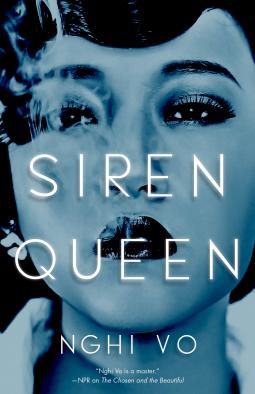 Siren Queen, by Nghi Vo (Tordotcom)
Siren Queen, by Nghi Vo (Tordotcom)From childhood, the Chinese American girl who calls herself Luli Wei has been fascinated by motion pictures. It’s the 1930s and silent films are giving way to talkies. But this isn’t the Hollywood we know. Magic lurks in strange corners, from the ticket-taker who swaps a bit of Luli’s hair (and a bit of her life) for tickets to the Wild Hunt rampaging through the studio lot in the dead of night. To Luli herself, who comes from a family in which the women possess a bit of immortality. Beginning with a chance encounter on a set to an offer of a contract, Luli rises through the ranks of girls desperate for stardom. She’s all too aware that the roles for Asians are limited to maids and fainting ladies who talk funny. So when the opportunity to play a monstrous siren queen comes along, she throws herself into the role. Along the way, she acquires friends, makes enemies, finds women lovers, and becomes a pioneer. The story is powerful, gorgeously written, and both dark and luminous.
February 6, 2023
Words for the Writer's Heart
February 3, 2023
Short Book Reviews: If Robin Hood Was Tam Lin
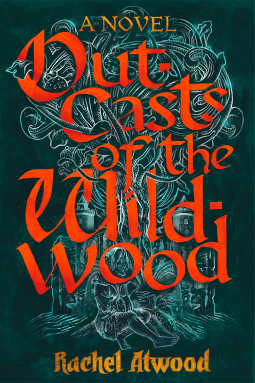 Outcasts of the Wildwood, by Rachel Atwood (DAW)
Outcasts of the Wildwood, by Rachel Atwood (DAW) In this sequel to Walk the Wild With Me, Rachel Atwood continues her delightful mash-up of the Robin Hood legends, Faerie, the Wild Folk, and characters from British and Celtic pagan folklore. Like the first book, this story begins slowly, which allows the reader to settle in to a world that defies some but not all assumptions. Each of the many viewpoint characters has his or her own backstory and goals. Yet even when the pace seemsslow, the intricate connections between the ordinary world, Faerie, and the world of magic unfold like a tapestry. Characters grow and change, secrets are revealed, and the wonderful way in which Atwood upends expectations all create a personal and unique approach to the stories we thought we knew.
Now the focus is on Robin (Goodfellow/Hood) and his lost love, Marian, and it’s great to see them take center stage. For the past 60 years, Robin has lived under a curse. For half of each day, he is a hideous gnome (Goodfellow) with a bit of magic and near immortality. The other half of the day, he is human, the legendary Robin Hood. Marian is locked in a secret chamber in perpetual sleep. The curse can be broken only if Robin awakens Marian in his gnome form and she recognizes who he truly is. This is a reverse of the old ballad, Tam Lin. Then it is the woman who, seeking to rescue her lover from the faeries, must pull him from horse and hold onto him as he is transformed into a variety of beasts and other dangers. Only when he is in his true form can his enchantment be broken.
As in the previous volume, Atwood spins a new take on traditional folk elements.
January 27, 2023
Short Book Reviews: A Complex, Brilliant Character-Driven Fantasy
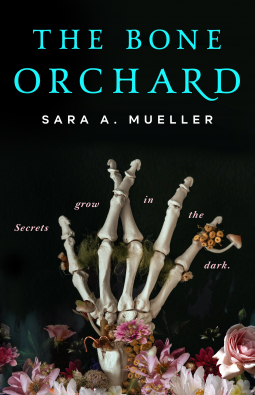
The Bone Orchard, by Sara A. Mueller (Tor)
With a style reminiscent of Tanith Lee and a world as complex and byzantine as M. A. Carrick’s, Sara A. Mueller spins a tale of magic, identity, politics, and hidden pain. The Bone Orchard is difficult to describe in terms of premise or plot because so much of the reading experience involves following the development of unreliable narrators who may or may not be the severed aspects of a single person. But who that person truly is and how much autonomy the other aspects possess pose questions that Mueller reveals gradually and with consummate skill.
We know that severe early trauma increases the risk of dissociative identity disorder, formerly called multiple personality. Suppose, then, that it were possible to create a synthetic version of yourself, using bones grown on trees, for example, a “you” that would bear that unbearable pain? Or take away your shame upon herself? At what point would you cease to be you? How many aspects of yourself must you lose to become someone else, and what would be left?
From the very first pages, I was enthralled by The Lady, Charm, Pain, Pride, Shame, and Justice, and how they each survived (or perished) in the game of ruthless, often lethal magical politics. I especially loved how each found a wellspring of compassion in her burden, especially Pain. The unexpected love story was like a chocolate left on a pillow.
Mueller writes that it took her many years to create this story, and the care she took shines through the depth and complexity of the world and its people. All too often, a debut novel that is the product of long development is followed by another that is comparatively rushed by early success. I hope Mueller is given the same scope for her next novel. If The Bone Orchard is any indication of what we can look forward to, it will be a treasure. She is definitely a talent to watch.

